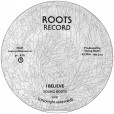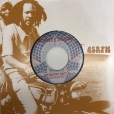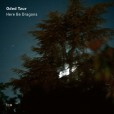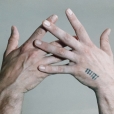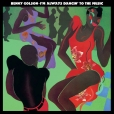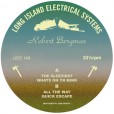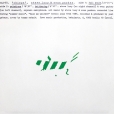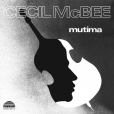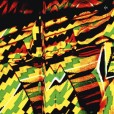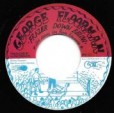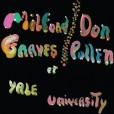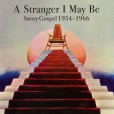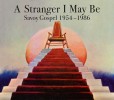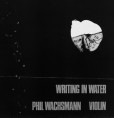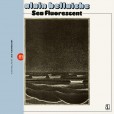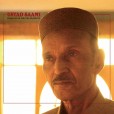Your basket is empty

Three rare recordings by this pioneer of early Danish electronic music — compelling, often dazzling, but focussed and without bombast.
‘Electronic Music was originally released in 1987 as a retrospective album, collecting three of Bent Lorentzen’s electronic works from the 70s. These clearly demonstrate Lorentzen’s close familiarity with his equipment and his great technical proficiency regarding the creation and manipulation of all sorts of electronic and recorded acoustic sounds — typically in the form of speed changes, reversed sounds, and reverb and filter effects. The music is often quite dramatic with distinct narratives and multiple dynamic layers of sound, but still with a clear sense of disposition and restraint, possibly stemming from Lorentzen’s experience with classical instrumentation and orchestration.’
Fastidiously prepared and stylishly presented by IDL, as per.
Deadly, seventies, New York roots. Rugged, a little wired.
The basic rhythm-track is Wackies-style. The flamboyant brass chart is jazzier. Moody organ, too. Young Roots himself goes on a bit.
The band backed The Aksumites on their first 12” (Afrika Fe De Afrikan) and gigged around the City.
I Believe this reissue is not properly licensed.
George Butler was head of A&R at Blue Note during the seventies. He co-produced Black Byrd with the Mizells; he signed Bobbi Humprey. When Blue Note closed in 1978, one of his first projects for Columbia was a disco-funk project with the legendary bebop saxophonist Benny Golson, on the cusp of his own comeback.
Golson was at high school with John Coltrane. He featured in a deadly late-fifties Jazz Messengers lineup; also Art Farmer’s Tentet. He wrote I Remember Clifford and Whisper Not.
It’s telling, how the jazz establishment has always despised this record. The title track was a humungous rare groove anthem, guaranteed to tear up a dance with its swinging, swaggering, musically-inspired upfulness, school of Walking In Rhythm and Music Is My Sanctuary.
‘Performed in Berlin at the Haus am Waldsee in July, 1985, it was every bit the chamber concert — super intimate and interactive, gorgeously recorded by FMP’s Jost Gebers in an ideal acoustic room. Rather than alternate between one and the other, Lacy and Parker explore middle-terrain the whole time, perhaps skewing a tad more Lacy’s funky-tuneful direction, becoming a single soprano entity made of fragments of sound sometimes accreting into perfectly imperfect lines. Two long tracks, Full Scale and Relations, are completed by a final four-minute coda aptly titled Twittering. Indeed, the whole program has the joyous interactivity of Paul Klee’s painting Twittering Machine: birds aligned on a line, proposing and picking up lines, nothing cruel or mean-spirited, free play all a graceful twitter.’
‘Turbocharged highlife from 1980s Ghana… It opens in fine style with Nka Bom, horns sharply descending over a disco bassline, with a triumphant electric piano solo and a lengthy percussion interlude. Other highlights include the growling Gbenta, with a bluesy bassline and machine-gun drumming, and the trumpet voluntary and dubby choral singing on Moonlight Africa’ (Financial Times).
Produced by Eno, who discarded his own contributions as ‘clumsy and unnecessary compared to Edikanfo’s witty, light funkiness… What they’d given me was finished — there was nothing else I could add.’
Rupie Edward’s wise and witty account of the 1973 Foreman-Frazier fight in Jamaica, over his own deadly Down Below rhythm, with tasty dashings of Errol Dunkley, and the influence of Lee Perry in full effect. Pure vibes.
Featured in its instrumental glory on the flip, the rhythm appealed so much to Coxsone Dodd that he bootlegged it.
His own compositions for solo piano by this collaborator of Louis Sclavis.
‘Thoughtful, reflective and profoundly lyrical.’
Bringing together two of the most prized, auratic LPs in all of free music, with music as vital and challenging today as it was more than five decades ago.
In Concert At Yale University, Vol. 1 was self-released on the duo’s Self-Reliance Program imprint in 1966. Copies are impossibly rare, especially the first few, which sported hand-painted covers by the musicians. (Several of these are displayed in the CD gatefold, together with a terrific photo of the pair selling LPs at a Nation of Islam convention.)
It was followed by Nommo, the next year.
For a performance at Yale University in New Haven, Connecticut, in spring of 1966, percussionist Milford Graves invited pianist Don Pullen to play duets. The two musicians had worked together in a band fronted by saxophonist and clarinettist Giusseppi Logan, with whom they had recorded two LPs in 1965 for ESP. Graves was already a daunting presence in free music. One step at a time, he was busy transforming the role of drumming in jazz, introducing a new way of dealing with unmetered time and accomplishing this task with technique that was almost inconceivable. His experience playing timbales in Latin bands had been formative, suggesting that the snare could be used as accent rather than beat-keeper, but by the mid 60s he’d worked up a holistic approach to sound and energy that was the most radical of his improvising percussion contemporaries.
For his part, this early setting finds Pullen at his most hard-hitting, and his pianism here lays to rest any allegations of Cecil Taylorism.
The first of three volumes surveying surely the mightiest Gospel label of them all.
Stomping, rollicking gospel music, intermingling with raw soul, searing blues, hard-rocking doo-wop and jazz, and storming r&b.
Infused and incandescent with the hurting, surging indignation of the Civil Rights movement, here are twenty-four precious scorchers by giants like the Staple Singers and Jimmy Scott, alongside devastating sides by less celebrated names like the Harmonising Five of Burlington, North Carolina, and teen-group the North Philadelphia Juniors, culminating triumphantly with slamming, sanctified versions of Hit The Road Jack and Wade In The Water. Drawn from nigh-impossible-to-find 78s, sevens and LPs, hardly any of these recordings have been reissued since their first release.
Presented in a gatefold sleeve, with full-size booklet; beautifully designed, with stunning, rare photographs and original Savoy artwork. Sound restoration and mastering at Abbey Road; pressed at Pallas.
Co-curated by Greg Belson, compiler of Divine Disco; with deep, extensive notes by Robert Marovich, author of A City Called Heaven: Chicago and the Birth of Gospel Music (University of Illinois), and host of the award-winning radio show Gospel Memories.
An extensive, sumptuous survey of surely the mightiest Gospel label of them all.
Sixty-one gems of stomping, rollicking, desolate, ravishing gospel music, intermingling with soul, blues, doo-wop, jazz, r&b, disco and boogie.
Presented as a sixty-page mini-book, with CDs suspended in card sleeves; perfect-bound, exorbitantly expensive to produce, lovely.
Seventeen gems of fierce funk, rapturous soul and transcendent disco and boogie, super-charged with celebration and affirmativeness, loaded with roaring choirs, rocking horns and popping bass guitars, from the years leading up to Savoy’s acquisition by Malaco.
From the mid-eighties, when he was lining up with Barry Guy and Paul Rutherford in Iskra 1903.
Spacious, detailed excursions layering violin, vocalese and electronics, Bach and a little dub.
Lovely, captivating stuff.
Highly sought-after French jazz fusion — blending in West Coast funk, gentle blues, sketches of Andalusia — with John Hicks, Jerry Goodman from the Mahavishnu Orchestra, and Jean-Marie Fabiano from the Fabiano Orchestra.
Mat Walerian, Matthew Shipp, William Parker, Hamid Drake.
The last living master of surti singing, a precursor of the ancient Islamic devotional music of qawwali. Wonderful.


